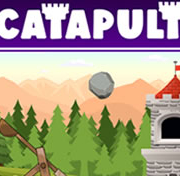Rock Cycle Science Game
This science game helps children practice about the rock cycle. The rock cycle describes the process by which rocks change over time. Rock formation is the process of heating and cooling molten material. When loose sediments lithify, sedimentary rock forms. Metamorphic rocks form when rocks that are already in existence undergo extreme conditions. Any type of rock can also change due to these processes.
You might want to include worksheets explaining the stages of the rock cycle if you are teaching your child about it. NASA's rock cycle worksheets will provide a detailed explanation of the factors that affect rock formation. These factors include heat, wind and pressure. They also explain the different types of rocks that are found in different environments. A song can also be a great way to teach your child about the rock cycle. The explanation and the song can help your child understand the process better.
Igneous rocks
The most common type of rock is igneous rocks. When they erupt, volcanoes create igneous rock. These rocks become metamorphic and sedimentary rocks as they cool. These two types of rock are very different and can be changed quickly. If igneous rock is formed above ground, it can change to sediment or metamorphic rocks. Underground, igneous rocks can also be found.
Sedimentary rocks
The process of weathering, erosion and formation of sedimentary rock results in the formation of this rock. Molten rock from a volcano is sent to the surface of the earth, where it cools down and solidifies into igneous rocks. Rain, wind, and other natural forces can cause the rock to break down and sediment to be deposited. Over time, sedimentary rock becomes harder and is covered by other rocks. Later, it becomes metamorphic rock.
When rock layers are compressed, a deposit of sediments forms. These sediments are often made up of fragments of pre-existing rocks and contain fossils. When sedimentary layers are mixed with other rock types, metamorphic rocks form. This creates a harder texture. Examples of sedimentary rock include limestone, gneiss and sandstone. Sedimentary rock is one of the oldest types of rock on Earth.
Metamorphic rocks
Metamorphism refers to the process by which one type of rock is transformed into another through pressure and temperature. The Earth's interior temperature is raised by geological processes to different levels. This process is also known as metamorphism and occurs at temperatures up to 200°C. Geothermy, which is also known as geologic gradients, can be used to move rocks deeper along geologic processes. Rocks can be moved to deeper areas of the Earth by folding and faulting.
There are two types if metamorphic rocks: granite and gneiss. The first is composed of dark-coloured minerals, and no quartz. The second is made from a mix of minerals. Both metamorphic rocks exhibit a distinct "beautiful sound". The darker-colored minerals form distinct bands and streaks within the rock as the metamorphism level increases. These minerals are found in mountainous areas, which indicates that once there were mountains.
Carbonate rocks
The mineral composition and texture of carbonate rocks is what determines their classification. There are many rock types that are carbonates. Others are silicates. Based on depositional structure as well as grain structure, the Dunham classification divides carbonate rock into two types: Sandstones or Mudstones. This classification is more methodical than the Folk classification. The main difference is in the amounts of carbonate minerals in silicate and mudstone rocks.
The age of the carbonate rocks and their composition will vary depending on the lithology. Micritic limestones, for example, have a higher carbon density than sparitic limestones. For example, silurian limestones from the United Kingdom have compressive strengths exceeding 50 MPa. Jurassic limestones, however, are weaker with unconfined compressive strength less than 12.5MPa.










